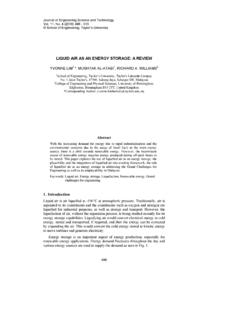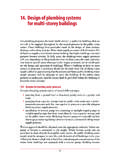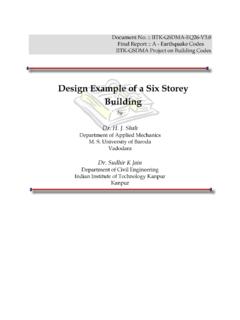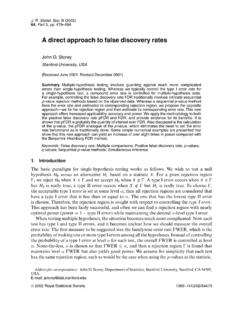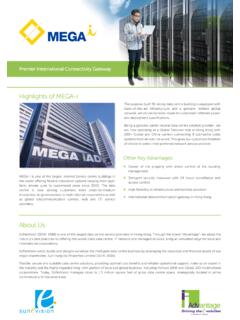Transcription of SEISMIC DESIGN OF TWO STOREY REINFORCED …
1 Journal of Engineering Science and Technology Vol. 9, No. 1 (2014) 27 - 46 School of Engineering, Taylor s University 27 SEISMIC DESIGN OF TWO STOREY REINFORCED CONCRETE BUILDING IN MALAYSIA WITH LOW CLASS DUCTILITY MOHD IRWAN ADIYANTO*, TAKSIAH A. MAJID School of Civil Engineering, Engineering Campus, Universiti Sains Malaysia, 14300, Nibong Tebal, Pulau Pinang, Malaysia *Corresponding Author: Abstract Since Malaysia is not located in active SEISMIC fault zones, majority of buildings in Malaysia had been designed according to BS8110, which not specify any SEISMIC provision. After experienced several tremors originating from neighbouring countries especially from Sumatra, Indonesia, the Malaysian start to ask questions on integrity of existing structures in Malaysia to withstand the earthquake load.
2 The question also arises regarding the economical effect in term of cost of construction if SEISMIC DESIGN has to be implemented in Malaysian construction industry. If the cost is increasing, how much the increment and is it affordable? This paper investigated the difference of steel reinforcement and concrete volume required when SEISMIC provision is considered in REINFORCED concrete DESIGN of 2 STOREY general office building. The regular office building which designed based on BS8110 had been redesigned according to Eurocode 2 with various level of reference peak ground acceleration, agR reflecting Malaysian SEISMIC hazard for ductility class low. Then, the all frames had been evaluated using a total of 800 nonlinear time history analyses considering single and repeated earthquakes to simulate the real earthquake event.
3 It is observed that the level of reference peak ground acceleration, agR and behaviour factor, q strongly influence the increment of total cost. For 2 STOREY RC buildings built on Soil Type D with SEISMIC consideration, the total cost of material is expected to increase around 6 to 270 %, depend on SEISMIC region. In term of SEISMIC performance, the repeated earthquake tends to cause increasing in interstorey drift ratio around 8 to 29% higher compared to single earthquake. Keywords: REINFORCED concrete, Interstorey drift ratio, Behaviour factor, Eurocode 2, SEISMIC DESIGN . 28 M. I. Adiyanto and T. A. Majid Journal of Engineering Science and Technology February 2014, Vol. 9(1) Nomenclatures As. Prov. Area of steel provided, mm2 agR Reference peak ground acceleration, g Fb Base shear force, kN fcu Concrete compressive strength, N/mm2 fy Gk Yield strength of steel reinforcement, N/mm2 Dead load, kN/m m Total masses, kg Qk Live load, kN/m q Behaviour factor Sd(T1) Spectral acceleration at fundamental period of vibration, T1, g T1 Fundamental period of vibration, sec Vs Shear wave velocity, m/s Greek Symbols Correction factor Abbreviations DCL DCM Ductility class low Ductility class medium FB Floor beam IDR Interstorey drift ratio, % PGA Peak ground acceleration, g RB Roof beam RC REINFORCED concrete 1.
4 Introduction Malaysia is situated relatively far away from active SEISMIC fault zone. However, it is clear that the nation is surrounded by high seismicity areas at the west, south, and east part as shown in Fig. 1 [1]. This is associated with the subduction zones between the Indo-Australian plate and Eurasian plate at the west and south part, also the subduction zones between the Eurasian and Philippines plate at the east region. Back to history, before entering the 21st century, Malaysian citizen are not totally aware of the earthquake hazard. They might hear about the catastrophic of 1996 Kobe earthquake in Japan and also the 1999 Koacaeli earthquake in Turkey, and then expressed their sympathy to the victims. After several days they forgot about the disaster and continue their business as usual. However, a large earthquake on 2004 Boxing Day which occurred west of Aceh, in Sumatra, Indonesia had became a wakeup call to all Malaysian as they felt the tremor in their home ground.
5 The earthquake with magnitude Mw also generated a disastrous Indian Ocean tsunami with high tidal wave that struck the coast of several countries in Asian region. In Peninsular Malaysia, a total of 76 persons have been reported killed and many properties had been destroyed when the tsunami hit along the northwest coastal areas of Perlis, Kedah, Penang, and to some part of Perak [2]. Then, the tremors also had been felt in Malaysia due to earthquakes with magnitude Mw which occurred on 28 March 2005 in Nias and 11 April 2012 in Aceh, Sumatra, Indonesia. SEISMIC DESIGN of Two STOREY RC Building in Malaysia with Low Class Ductility 29 Journal of Engineering Science and Technology February 2014, Vol. 9(1) Fig. 1. Earthquake events ( ) to a depth of 50 km since 1972 [1]. Since Malaysia is not located in active SEISMIC fault zones, majority of buildings in Malaysia had been designed according to BS8110 [3] which not specify any SEISMIC provision.
6 After experienced several tremors originating from neighbouring countries, the Malaysian start to ask questions on integrity of existing structures in Malaysia to withstand the earthquake load. Based on previous investigation [2], it had been reported that most the buildings were in good condition in Peninsular Malaysia and at least 50% of selected buildings were found to experience concrete deterioration problems due to vibration during earthquake. It is also been reported that the vertical element DESIGN provision were inadequate for at least 50% of the building evaluated. Then, the Malaysian Public Work Department (JKR) suggested that it was worthwhile to consider SEISMIC DESIGN input for new buildings located in medium-to-high risk earthquake zones. Now, the question is arises regarding the economical effect in term of cost of construction if SEISMIC DESIGN has to be implemented in Malaysian construction industry.
7 If the cost is increasing, how much the increment and is it affordable? In a real earthquake event, the first tremor is always followed by other tremors. This is the nature of earthquake and may occur just a few hours after the first one, and may occur continuously to a few days. In technical views it can be called as repeated earthquake or multi event earthquake [4]. Therefore, during a great earthquake event, buildings are imposed to the action of earthquake load more than one time. The buildings may experience minor to moderate damage after being hit by the first tremor resulting in stiffness and strength degradation of the global system. For this situation, any rehabilitation action is impractical due to time constraint [5]. Then, if the not yet repaired buildings being subjected to the following tremors, the buildings are expected to experience worse damage that lead to collapse.
8 Current provisions in earthquake engineering such as the Eurocode 8 [6] and FEMA 368 [7] only suggest to considering single earthquake 30 M. I. Adiyanto and T. A. Majid Journal of Engineering Science and Technology February 2014, Vol. 9(1) in analyses. Either in designing the new building or evaluating the existing one, this recommendation had been practised for years. However, it had been analytically proved that considering repeated earthquake phenomena in analysis requires an increase in strength with respect to single earthquake [8]. Recently, it is also reported that repeated earthquake induced to times increment in maximum STOREY ductility demand compared to the single one [9]. Therefore, the traditional SEISMIC DESIGN procedure which is based on single earthquake should be generally reconsidered [4, 5].
9 This paper investigated the difference of steel reinforcement and concrete required when SEISMIC provision is considered in REINFORCED concrete (RC) DESIGN of general office building. The original two STOREY regular office building which designed based on BS8110 [3] had been redesigned according to Eurocode 2 [10] with various level of reference peak ground acceleration, agR reflecting Malaysian SEISMIC hazard for ductility class low (DCL). Then, the original and newly designed frames had been evaluated using nonlinear time history analysis considering single and repeated earthquakes to simulate the real earthquake event. 2. Analysis Procedure In this paper, 2 dimensional (2D) analyses had been conducted on typical frame of two STOREY RC building. The frame was assumed to be designed for general office building with three equal bays of m and typical STOREY height of m as shown in Fig.
10 2. First of all, the generic frame was designed according to BS 8110 [3] to represent the current practice of RC DESIGN in Malaysia. The frame was designed with minimum requirement which is just to pass the demand from gravity load. Due to lower magnitude of load, the DESIGN of roof beam, RB located at top STOREY of the frame is differ compared to the DESIGN of floor beam, FB at first STOREY . Typical column DESIGN had been used in all STOREY . Then, the similar frame also had been designed without considering SEISMIC load based on Eurocode 2 [10]. Fig. 2. Elevation of Regular RC Frame Model. Since only the DCL had been considered in this study for SEISMIC DESIGN , the behaviour factor, q used is equal to as proposed in Eurocode 8 [6]. For comparison of cost, the frame also had been designed based on elastic response m m m m m Floor beam Roof beam SEISMIC DESIGN of Two STOREY RC Building in Malaysia with Low Class Ductility 31 Journal of Engineering Science and Technology February 2014, Vol.
